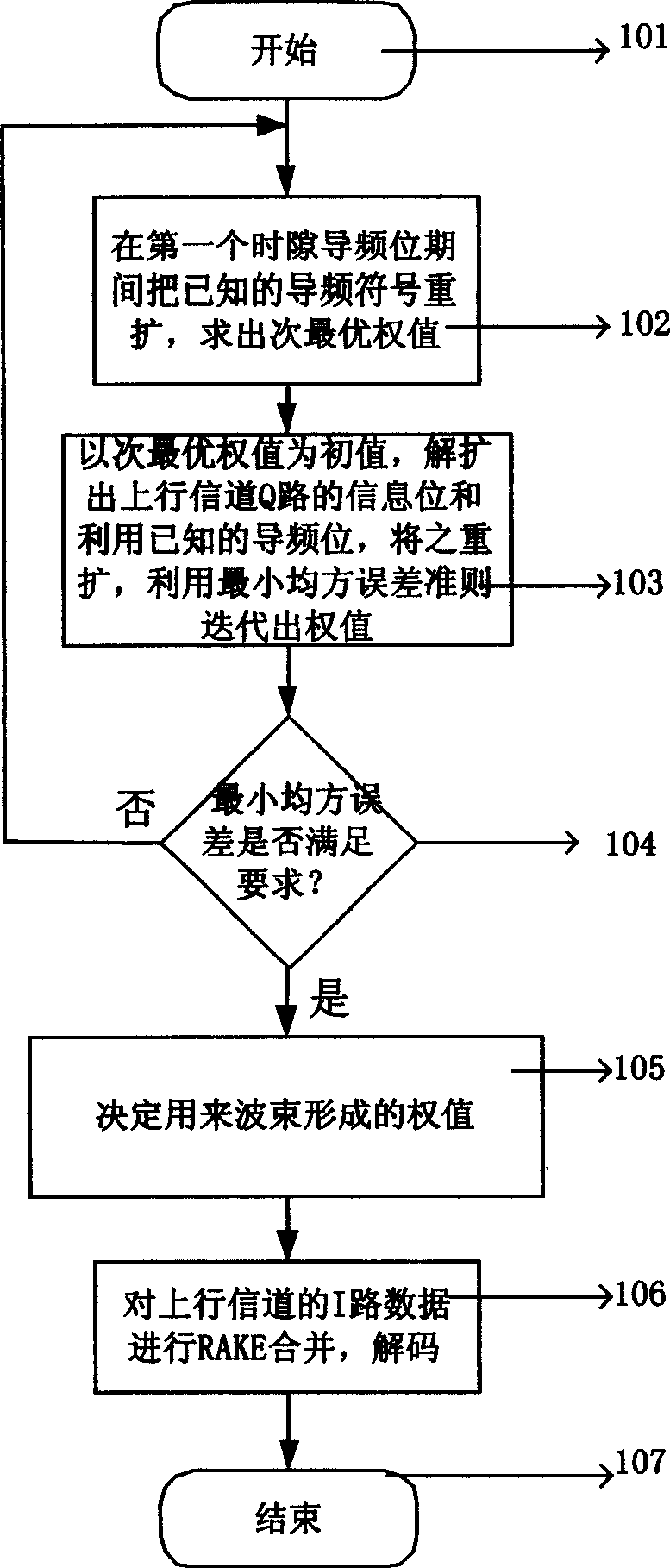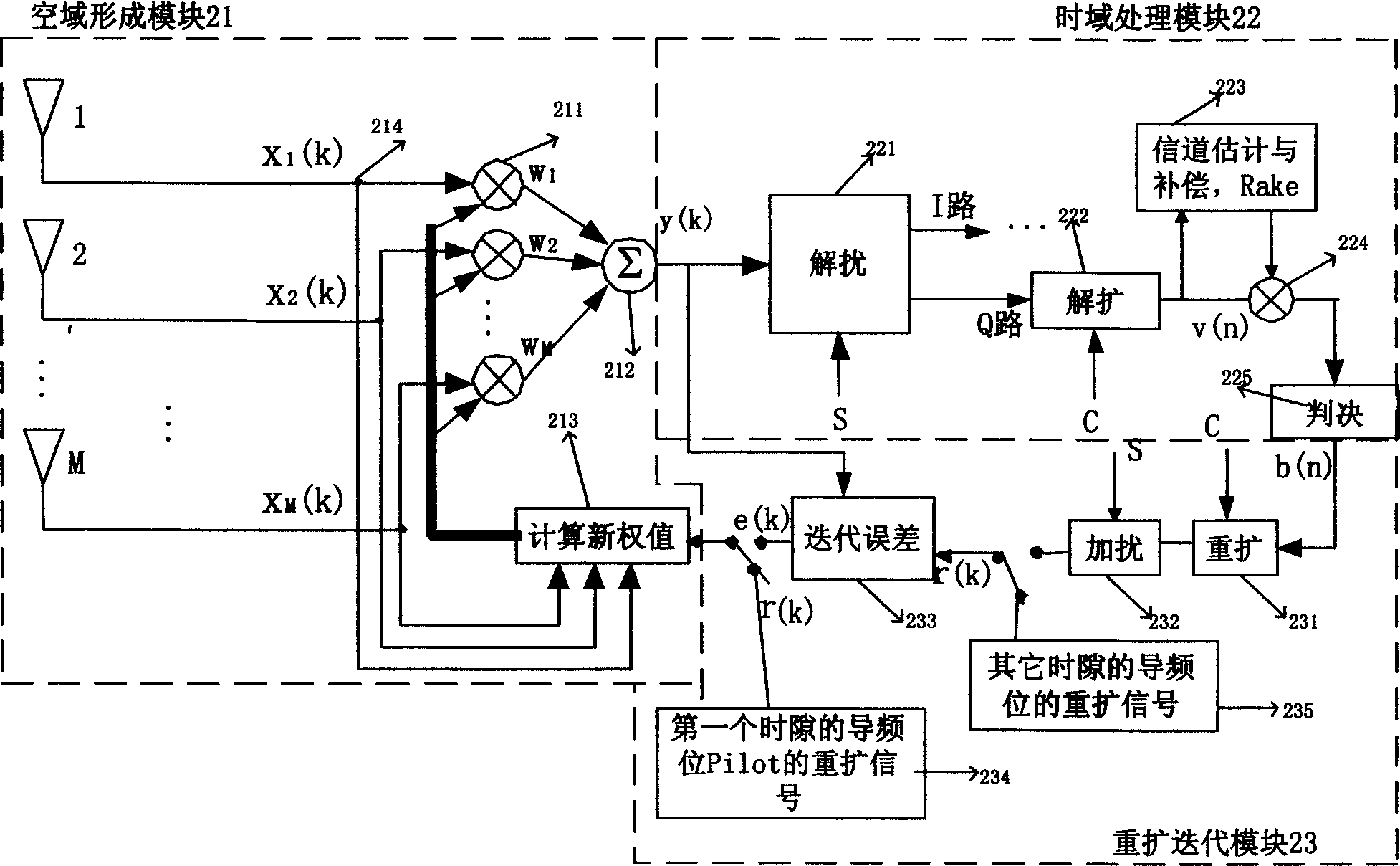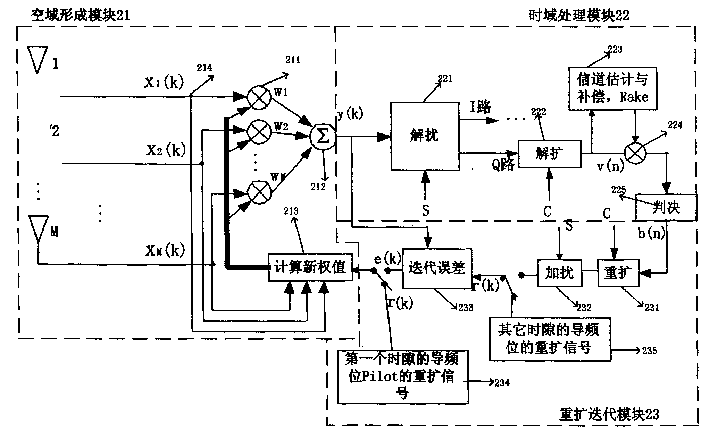Beam forming method adapted to wide band CDMA system
A broadband code division multiple access and beam technology, which is applied in the direction of code division multiplexing system, diversity/multi-antenna system, baseband system components, etc. Excellent problems, to achieve the effect of reducing technical difficulty and calculation amount, simplifying system composition, and shortening R&D cycle
- Summary
- Abstract
- Description
- Claims
- Application Information
AI Technical Summary
Problems solved by technology
Method used
Image
Examples
Embodiment Construction
[0010] Such as figure 1 As shown, the process starts, step 101; first, during the pilot bit period of the first time slot, the respread scrambling symbol of the known uplink channel pilot symbol is used as a reference signal, and the current information bit aligned with the time delay The array receiving vector X of the array receives the cross-correlation operation to find the suboptimal weight value. During the pilot bit period of the first time slot of each frame, the signal after the pilot signal is spread and scrambled is used as the reference signal r, and the The cross-correlation matrix r of the pilot signal X received by the array and the reference signal r xr =E[Xr * ], the approximate solution obtained according to the minimum mean square error criterion is used as the adaptive suboptimal weight W=r xr , and use the weight W calculated in the above two steps to carry out beamforming Y=W×X, Y is the input of the time domain processing module 22 and the respreading ...
PUM
 Login to View More
Login to View More Abstract
Description
Claims
Application Information
 Login to View More
Login to View More - R&D
- Intellectual Property
- Life Sciences
- Materials
- Tech Scout
- Unparalleled Data Quality
- Higher Quality Content
- 60% Fewer Hallucinations
Browse by: Latest US Patents, China's latest patents, Technical Efficacy Thesaurus, Application Domain, Technology Topic, Popular Technical Reports.
© 2025 PatSnap. All rights reserved.Legal|Privacy policy|Modern Slavery Act Transparency Statement|Sitemap|About US| Contact US: help@patsnap.com



